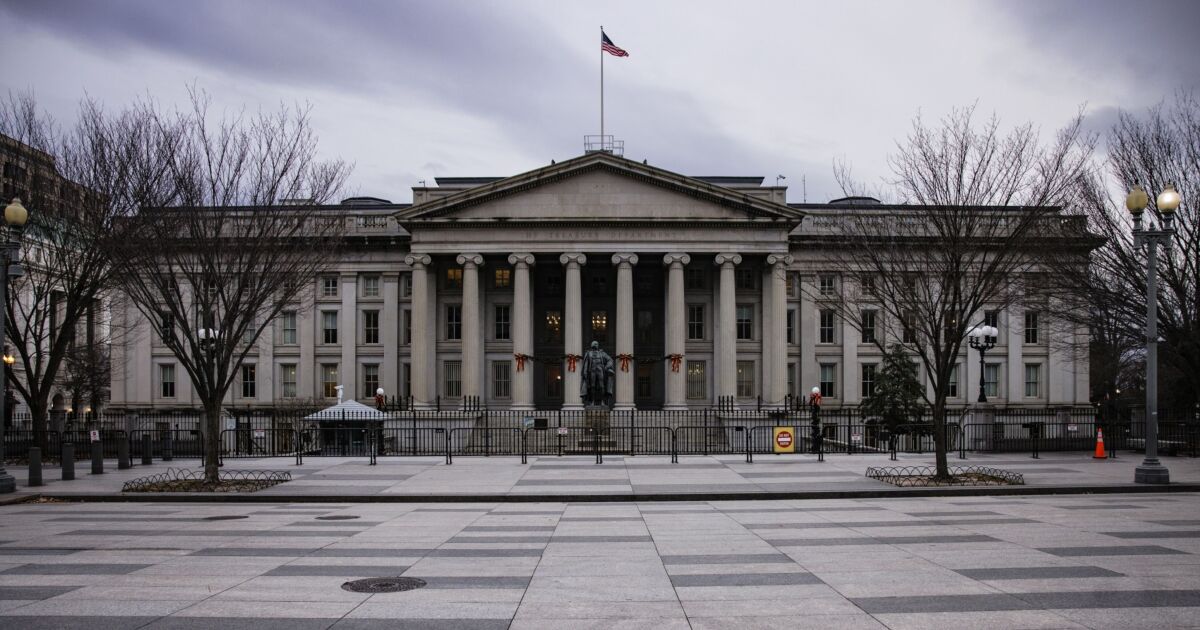
Treasury yields rose sharply, joining a global bond selloff as traders pared bets on deep interest-rate cuts from major central banks this year.
The benchmark 10-year yield rose as much as nine basis points to 3.97%, while similar-maturity German bond yields jumped nine basis points to 2.11%, the highest in more than two weeks. The equivalent UK rate rose 15 basis points. Shorter-dated
The moves reflect doubts that policymakers will deliver the extent of
"With lots of corporate deals already announced today, I think the supply story is behind the move," said Gennadiy Goldberg, head of US interest rates strategy at TD Securities. "But bigger picture, markets are still trying to find their footing ahead of key data."
Economic data due this week include readings on the job market and monthly payrolls figures as well as minutes of the Federal Reserve's meeting when policymakers upended markets last month pivoting to more rate cuts.
U.S. money markets priced around 150 basis points of Fed easing in 2024, about seven basis points less than at the close of last week. While the pace of hiring is moderating, a
For the European Central Bank, traders are betting on 158 basis points of easing this year, or about 10 basis points less than last week. While euro-area inflation has been in retreat, central bank officials see a
"The market should probably have a bit more of a bearish tone going forward," Emmanouil Karimalis, a rates strategist at UBS Group AG, said in an interview with Bloomberg TV. "The ECB and other central banks have not signaled the all clear."
Analysis by Societe Generale strategists shows long-maturity yields tend to peak around the last rate hike before declining 100 basis points on average over the next year or so. At the end of 2023, bund yields slumped nearly that much in just two months, leaving bondholders with very little buffer to protect them from volatility.
"Unless the rally intensifies because of some near-term risk-off, we believe the extremely low unit price of duration risk will make it challenging for investors to happily swallow the new issuance," the strategists wrote in a note.
After selling pressure saw the greenback tumble roughly 5% through November and December, the Bloomberg dollar gauge gained as much as 0.7% Tuesday, the biggest intraday jump since Oct. 12. The move comes after the gauge's 14-day relative strength index dropped below 30 early last week, a sign that the currency was oversold and primed for a reversal, according to some technical analysts.
"The market may be looking ahead to Fed rate cuts this year but with so many already priced in, it is very likely that there will be a moderation in market expectations," said Jane Foley, head of FX strategy at Rabobank. "Assuming some of these rate-cut hopes are priced out, the USD is likely to strengthen first before potentially ending 2024 softer."
While the dollar has rebounded in recent days, it's likely to flip back to declines, according to strategists for Bloomberg's Markets Live team. They see the Fed cutting rates more aggressively, and potentially sooner, than other major central banks.



